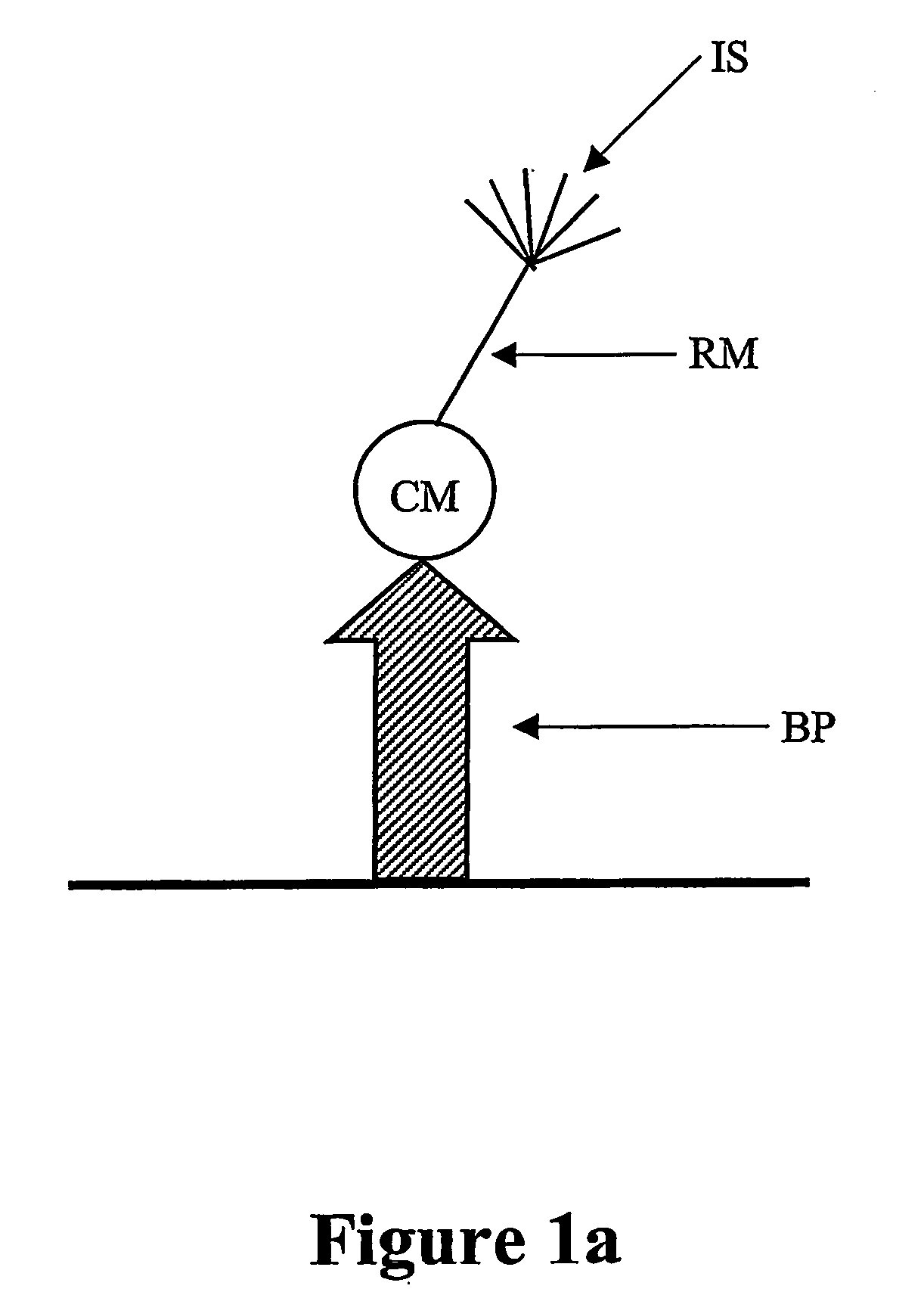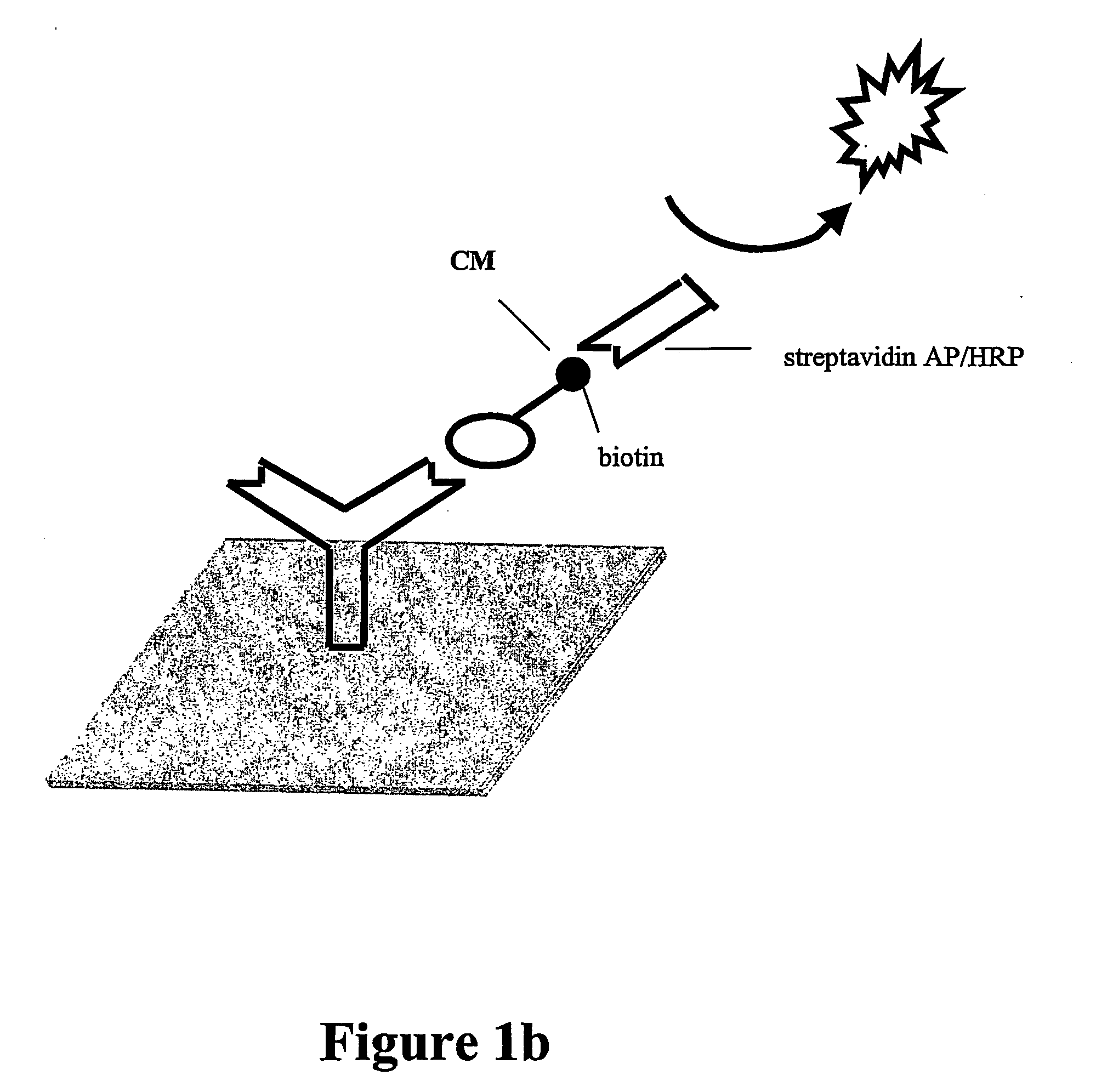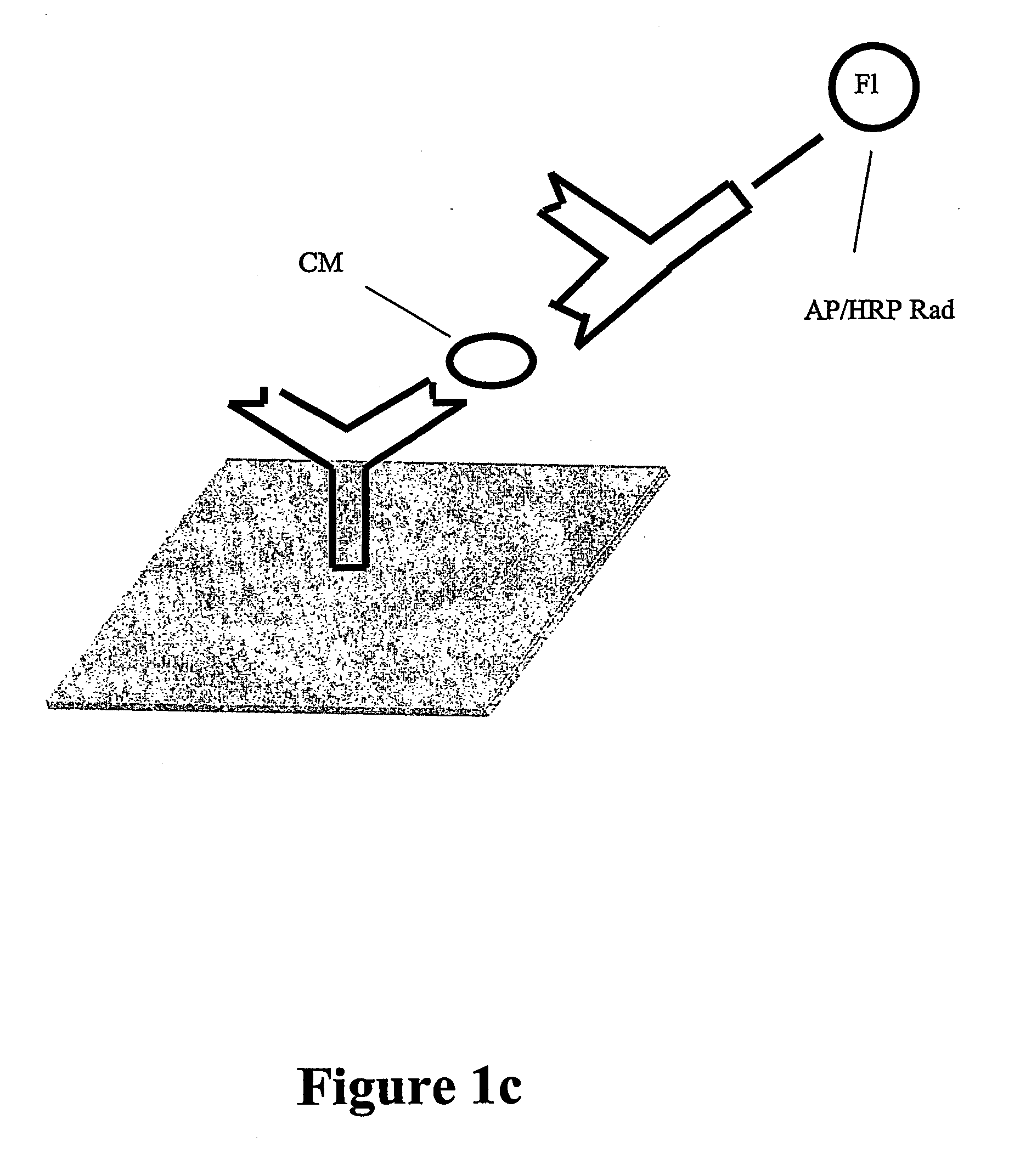Diagnostic assay
a technology of diagnostic assay and detection assay, applied in the field of diagnostic assay, can solve the problems of limited detection of small infarcts, difficult detection of silent infarctions,
- Summary
- Abstract
- Description
- Claims
- Application Information
AI Technical Summary
Benefits of technology
Problems solved by technology
Method used
Image
Examples
example 1
Early Biochemical Markers of a Cardiac Condition or Event
Myoglobin, CK-MB, Cardiac Troponin-T and Cardiac Troponin-I
[0394] The prime requisite for an early marker is that the development of the test should be readily performed in a short time period and that the marker be released soon after the ACS including AMI. Ideally, an early diagnostic for ACS including AMI is a Point-of-Care device, namely a small, preferably hand-held device which is used when a potential ACS including AMI patient first presents at a clinic including a hospital or general physician's practice.
[0395] Of the early markers, each of myoglobin, total creatinee kinase (CK) including creatinee kinase MB isoform (CK-MB), cardiac troponin-T (cTn-T) and cardiac troponin-I (cTn-I), has slightly different characteristics based on:—[0396] (1) whether it is specific to cardiac tissue; [0397] (2) time to reach peak serum levels; [0398] (3) the period during which peak level is maintained; [0399] (4) clinical sensitivi...
example 2
Evaluation of the Efficiency of the Diagnostic Performance of the Device
[0408] The efficiency (E) of the diagnostic assay is determined using the formula: E=TPTO×100
where TP=true positives and TO=total number of tests. TO is calculated by the expression TO=TP+FP+FN+TN where FP=false positives; FN=false negatives and TN=true negatives. E has the following range of values: 0
example 3
[0409] The magnitude of the change of a biochemical marker as a function of time correlates with the size of the infarct determined at autopsy. Clearly the reliability of these integrations is enhanced if a multiplicity of tests is available.
[0410] The size (volume) of an infarct is a function of:—[0411] (1) the time scale over which the biochemical marker is released; [0412] (2) the rate of release of the biochemical marker (f(t)); [0413] (3) the body weight (Bw) of the patient; [0414] (4) the proportion of the body weight into which the biochemical marker is released (Kw); [0415] (5) the rate of removal of the biochemical marker from circulation (Ed); [0416] (6) the total biochemical marker released divided by the amount of that marker released from the infarcted myocardium (Kr).
[0417] Accordingly, infarct size (Is) is determined using the formula:—Is=∫0tf(t) ⅆt×Bw×KwEd×Kr
PUM
| Property | Measurement | Unit |
|---|---|---|
| Fraction | aaaaa | aaaaa |
| Fraction | aaaaa | aaaaa |
| Fraction | aaaaa | aaaaa |
Abstract
Description
Claims
Application Information
 Login to View More
Login to View More - R&D
- Intellectual Property
- Life Sciences
- Materials
- Tech Scout
- Unparalleled Data Quality
- Higher Quality Content
- 60% Fewer Hallucinations
Browse by: Latest US Patents, China's latest patents, Technical Efficacy Thesaurus, Application Domain, Technology Topic, Popular Technical Reports.
© 2025 PatSnap. All rights reserved.Legal|Privacy policy|Modern Slavery Act Transparency Statement|Sitemap|About US| Contact US: help@patsnap.com



